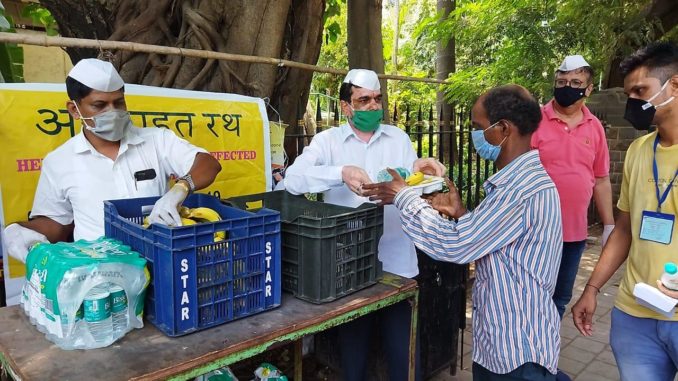There does seem to be a broad consensus among economists with whom we spoke, that an urban employment guarantee scheme is necessary to stabilise the economy. Abhijit Mukhopadhyay, a Senior Fellow with the Observer Research Foundation’s Economy and Growth Programme, considers expansion of the employment guarantee programme to urban areas (beyond the MNREGA scheme for villages) as a necessary step in his blueprint for economic revival. He elaborates on this argument in a paper he wrote in January 2021.
“Apart from boosting purchasing power and thereby consumption demand, such a scheme has the potential to raise and stabilise urban wages,” writes Mukhopadhyay. “This can also create a stable national labour market by regularising inter-state migration that can balance surplus and shortage in different labour markets. The scheme has the potential to create urban assets like environment-friendly green public spaces and can augment the existing central government endeavours like smart cities.
“If there has ever been a dire need to start this measure, it is now. Around 10-15 non-metro cities can be targeted immediately on a pilot basis”.
What the numbers say
The reality is that between April 1 and May 20, 2020, over 3.5 million new applicants sought jobs under MNREGA, compared to 1.8 lakh applicants during the corresponding period the previous year. Ironically, there is now pressure on rural jobs, while the NCR region is witnessing a vicious cycle of joblessness for the urban poor, and manufacturing, milling, textiles, realty, construction, hospitality all saying their capacities are underutilized as labour has not returned. Also, those who did return to the cities either did not find a job, or were paid less.
Read more: For migrant workers in Chennai, second COVID wave brings déjà vu
In fact, a CMIE survey found that 55 % of people said their incomes were less in 2021 compared to 2020. “Enterprises are unwilling to do anything because they have got this huge capacity they are unable to utilize,” says Mahesh Vyas, CEO of CMIE. “If the government does nothing, we are going to be in trouble”.
And that is precisely what governments are doing, nothing. A senior AAP leader, not wanting to be identified, said the Delhi government has neither considered, nor asked the Centre to consider, an urban employment guarantee scheme on the lines of MNREGA.
“It will become one more controversy,” said the leader. “And such a scheme in the city will be around jobs that are done either by the municipal corporations’ employees, or contractual labour hired by them, not by any jobs the Delhi government has. We cannot fund such a scheme, and the corporations have not paid salaries of their employees, so how will they run such a scheme?”

However, the Congress in the capital has, since March, been demanding an urban minimum employment guarantee scheme for the urban poor. The CPI(M) in June 2020, sought a minimum 200 days’ work under MNREGA, and extension of the scheme to the urban areas.
How to implement such a scheme
There have been periodic reports that the Centre was considering such a scheme since Jean Dreze, credited with having had an important role in the concept and drafting of MNREGA, proposed a “Decentralised Urban Employment and Training,” or DUET.
DUET is different from MNREGA in many ways. A visiting professor of economics at Ranchi University, Dreze explains his idea thus: “The government would issue ‘job stamps’ and distribute them to approved public institutions–schools, colleges, hostels, shelters, jails, museums, municipalities, government departments, health centres, transport corporations, neighbourhood associations, urban local bodies, and so on. These institutions would be free to convert each job stamp into one person-day of work within a specified period.”
Read more: Mumbai Dabbawalas help the needy
As for the kind of jobs, Jean Dreze argues there is plenty to do. “As public premises reopen after months of lockdown, extra work will be needed to restore them,” says Dreze. “This is an excellent time for an urban employment drive. Looking beyond maintenance, there are vast possibilities of productive work in fields like public health, environmental improvement, and perhaps even home care”.
Though the BJP-led Centre has regularly enhanced the budgetary allocations for the Congress-led UPA government’s flagship scheme that MNREGA will be remembered as, government sources told this reporter that there was never even an informal discussion on an urban employment guarantee scheme in the corridors of the government.
However, a government press release dated February 8, 2021, titled “Employment Guarantee for Urban Poor,” listed the various Central schemes targeting the poor. This was based on a written reply of Minister of State for Labour and Employment S Gangwar gave in the Lok Sabha that day.
On implementation and efficacy, however, the minister had nothing to say.
A contrarian view
Inevitably, while everyone agrees that something needs to be done immediately to help the urban poor, not all analysts think an urban employment guarantee scheme is the answer. The primary reason they cite is affordability, given that daily minimum wage rate in urban areas is more than double than what is offered in MNREGA schemes. Besides issues of eligibility and selection would raise a political furore.
Swaninathan S Ankesaria Aiyar, economist and columnist is one such. In a 2020 column, he writes that a job guarantee scheme that pays the much higher urban daily wage rate “will induce an additional inflow of rural immigrants. That will mean urban slums with more congestion and pollution”.
Iyer, in fact, argues for a reversal of the urban job guarantee idea — to use that money to vastly expand rural development and MNREGA programmes that will enable villagers to earn a sustainable wage and keep them from migrating. “One objective of MGNREGA is to curb rural migration to towns. An urban guarantee scheme will do the opposite, sabotaging MGNREGA’s intent… A crisis like COVID-19 justifies emergency outlays to help unemployed urban workers. But in these circumstances, expanding MGNREGA is surely better than creating urban jobs at far higher costs per job,” he writes.